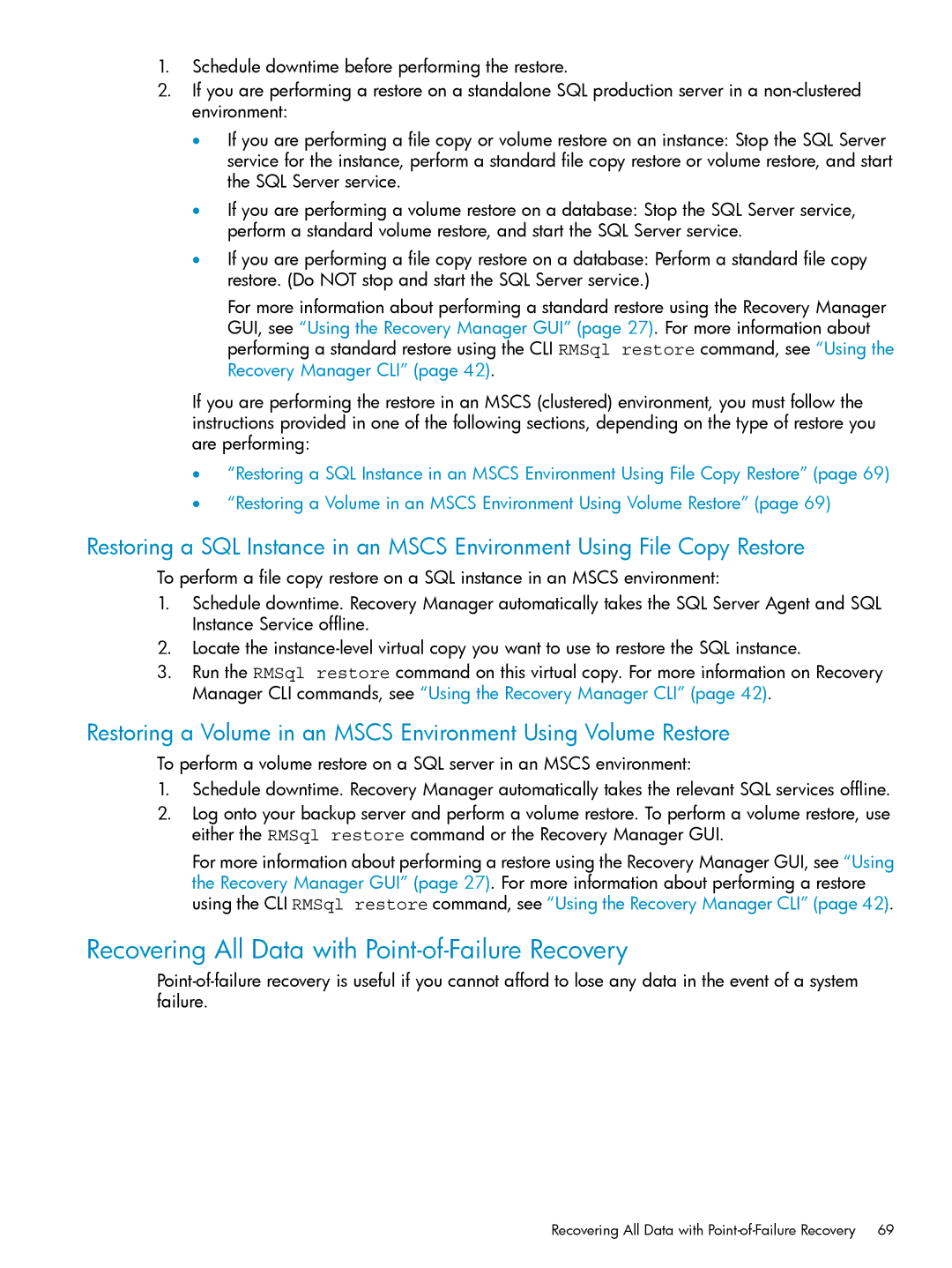1.Schedule downtime before performing the restore.
2.If you are performing a restore on a standalone SQL production server in a
•If you are performing a file copy or volume restore on an instance: Stop the SQL Server service for the instance, perform a standard file copy restore or volume restore, and start the SQL Server service.
•If you are performing a volume restore on a database: Stop the SQL Server service, perform a standard volume restore, and start the SQL Server service.
•If you are performing a file copy restore on a database: Perform a standard file copy restore. (Do NOT stop and start the SQL Server service.)
For more information about performing a standard restore using the Recovery Manager GUI, see “Using the Recovery Manager GUI” (page 27). For more information about performing a standard restore using the CLI RMSql restore command, see “Using the Recovery Manager CLI” (page 42).
If you are performing the restore in an MSCS (clustered) environment, you must follow the instructions provided in one of the following sections, depending on the type of restore you are performing:
•“Restoring a SQL Instance in an MSCS Environment Using File Copy Restore” (page 69)
•“Restoring a Volume in an MSCS Environment Using Volume Restore” (page 69)
Restoring a SQL Instance in an MSCS Environment Using File Copy Restore
To perform a file copy restore on a SQL instance in an MSCS environment:
1.Schedule downtime. Recovery Manager automatically takes the SQL Server Agent and SQL Instance Service offline.
2.Locate the
3.Run the RMSql restore command on this virtual copy. For more information on Recovery Manager CLI commands, see “Using the Recovery Manager CLI” (page 42).
Restoring a Volume in an MSCS Environment Using Volume Restore
To perform a volume restore on a SQL server in an MSCS environment:
1.Schedule downtime. Recovery Manager automatically takes the relevant SQL services offline.
2.Log onto your backup server and perform a volume restore. To perform a volume restore, use either the RMSql restore command or the Recovery Manager GUI.
For more information about performing a restore using the Recovery Manager GUI, see “Using the Recovery Manager GUI” (page 27). For more information about performing a restore using the CLI RMSql restore command, see “Using the Recovery Manager CLI” (page 42).
Recovering All Data with Point-of-Failure Recovery
Recovering All Data with
